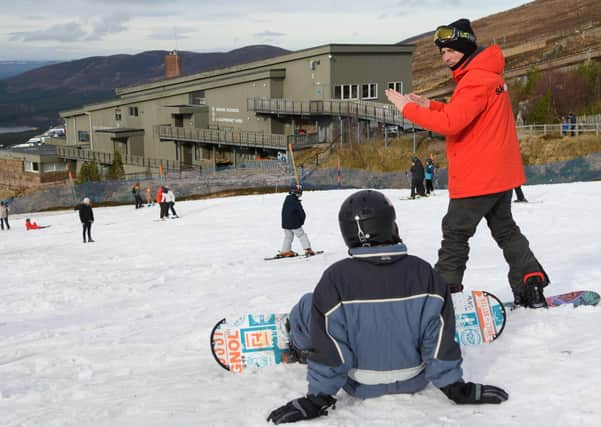Why the Cairngorm Mountain masterplanners need to look beyond the funicular


The last few years have been a bit of a challenge for the Cairngorm Mountain ski area, in the same way that trying to bail water out of a sinking boat might be a bit of a challenge if you were trying to row it into the teeth of a hurricane at the same time. Of course, everyone knows about the broken funicular railway, which will now cost either millions to repair or almost as many millions to remove, but there are other underlying issues too that are less frequently discussed. Even before the railway was deemed unusable, the resort was already losing market share. Between 2004 and 2013 it accounted for an average of 40 per cent of all the ski passes sold in Scotland each season, but in the years from 2014 to 2018, during which time it was operated by the Cheshire-based leisure company Natural Retreats, this collapsed to just 32 per cent. The problems with the funicular weren’t identified until the autumn of 2018, so clearly the resort’s fortunes were already on the wane by the time the funicular’s concrete supports were found to be suspect.
Since the news broke that the funicular would have to be shut down, there has been no shortage of free advice on offer for Highlands and Islands Enterprise (HIE), who were forced to take over operations at the resort after Natural Retreats packed up and went home. Some believe that the money it would cost to repair the funicular could be better spent on other, more modest forms of uplift; some believe that, as climate change continues to make skiing in Scotland a more marginal activity, the time has come to shut down the resort altogether and allow it to return to nature; and, of course, there are those skiers and business owners who would just like their local ski hill to be returned to something approaching its former glory.
Advertisement
Hide AdAdvertisement
Hide AdOn 11 February, HIE commissioned Threesixty Architecture and Jura Consultants to conduct an anonymous online survey of interested parties, inviting people to give information about their “experiences and aspirations” for the ski area. The survey will be live until midnight on Sunday (see link below) and responses will then be “collated into grouped data.”
It is possible, of course, that this grouped data will show a near-unanimous call for one solution or another. More likely, however, is that the results of the survey will mirror the debate that’s been unfolding online, with a wide spectrum of opinion ranging from “remove all signs of human activity and allow the hillside to return to its natural state” to “repair the funicular, expand the base station and, while you’re at it, stick in that mile-long mountain roller-coaster suggested by an American consultancy firm a few years back.”
The only certain thing is that, once the consultation is complete and HIE eventually come out with their much-anticipated masterplan for the hill, somebody somewhere is going to be deeply unhappy about it.
Given the enormous costs involved (£13 million for repair, £10 million for removal), it seems inevitable that the funicular will be at the heart of the Cairn Gorm debate for years to come. However, if HIE intend to continue to run a ski resort of some description on the mountain – and there’s every indication that they do – then it will be necessary for them to look beyond this very large elephant in the room and try to figure out what was going wrong with the business before the funicular broke down, as well as looking at what Scotland’s other ski areas have been doing right in the meantime.
A comparison with the much smaller Glencoe Mountain ski area – which almost doubled its market share between 2014 and 2018 – is instructive. While Natural Retreats were busy tearing out old chairlifts in Coire na Ciste, ignoring a chorus of outrage from the local skiing community, Andy Meldrum, who bought Glencoe out of administration in 2010, was gradually expanding the lift infrastructure on Meall a’Bhuiridh using “pre-loved” lifts imported from the Alps. And while Natural Retreats’ CEO Matthew Spence was busy making wild promises such as “my long-term goal is to host the summer and winter X Games at CairnGorm Mountain” Meldrum was developing popular grassroots contests such as the Coe Cup freeride event, which paved the way for the Scottish Freedom Series now run by SnowSport Scotland.
Whatever happens to the funicular, if the folks at HIE are serious about maintaining a ski area on Cairn Gorm they would do well to import a little of Glencoe’s modest, skier-focused, “doing the best we can with what we have” spirit.
To fill out the Cairngorm Mountain Masterplan Questionnaire, visit https://tinyurl.com/qkueypa
Comments
Want to join the conversation? Please or to comment on this article.